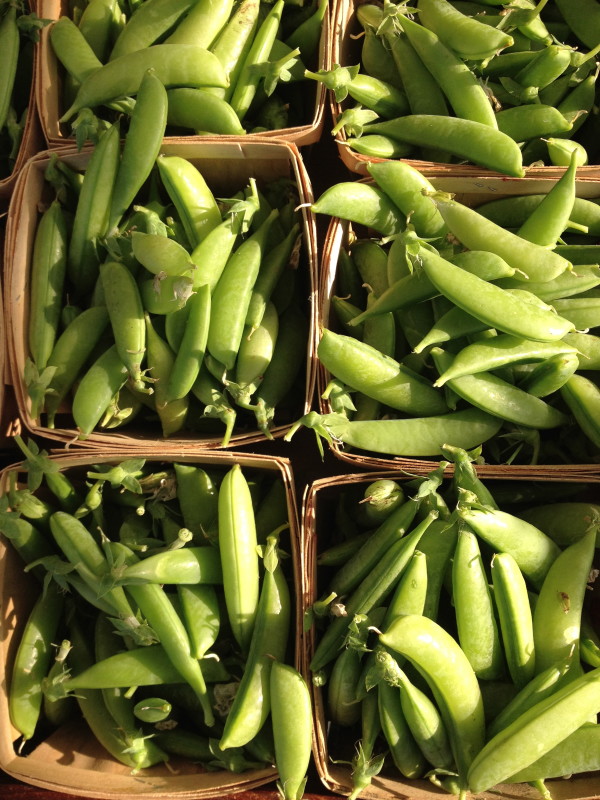
Peas

Market Look-For’s
- Bright, tight skin
- Wrinkly skin means the peas have been off the plant for a while, which tends to mean that the peas will be starchy.
- White striations (that look like stretch marks) on the pod generally mean a very fibrous and less palatable pod.
Storage
- If eating fresh, eat them up quick. Like corn the longer the pea is off the plant the more the internal sugars will convert to starch yielding a less sweet dish.
- If freezing to preserve the bounty of your garden, quickly blanch the peas before freezing for the best results.
Notes
- Shelling Peas: maybe the most well known of the peas. Grown until the seeds inside the pod are full and round and then shucked from their pod. These are the little round guys everyone knows.
- Snap Peas: round pod-ed peas. Grown until the seeds inside plump but the entire pod is eaten. The most common varieties: Sugar Anne and Amish Snap.
- Snow Peas: more common in Eastern cuisines. Broad, flat pods harvested before the internal seeds plump and the whole pod is eaten.
- Pea Tendrils or Shoots are the tender first growth of the pea plant and make a sweet, grassy addition to salads or to garnish any dish. Pea tendrils are generally available year round.
- To keep your garden peas growing, keep picking the pea pods and hope for cool weather. If a pea plant can bring a pod to ripen (because it has been picked off) it will try again and again and again.
- Pea plants generally crap out in the heat making them traditional products for spring and fall.
- Frozen peas are one of the few vegetables that are a better option than an out of season product. Shelling peas are often grown on a large scale and then processed and frozen very quickly. So when peas aren’t at your market, look in your freezer section.
Site by Bryan Morrison

